new posts in all blogs
Viewing: Blog Posts Tagged with: Film and Media, Most Recent at Top [Help]
Results 1 - 6 of 6
How to use this Page
You are viewing the most recent posts tagged with the words: Film and Media in the JacketFlap blog reader. What is a tag? Think of a tag as a keyword or category label. Tags can both help you find posts on JacketFlap.com as well as provide an easy way for you to "remember" and classify posts for later recall. Try adding a tag yourself by clicking "Add a tag" below a post's header. Scroll down through the list of Recent Posts in the left column and click on a post title that sounds interesting. You can view all posts from a specific blog by clicking the Blog name in the right column, or you can click a 'More Posts from this Blog' link in any individual post.
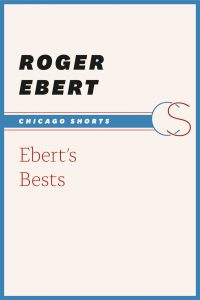
Our free e-book for March is Ebert’s Best by Roger Ebert. Download your copy here.
***
Roger Ebert is a name synonymous with the movies. In Ebert’s Bests, he takes readers through the journey of how he became a film critic, from his days at a student-run cinema club to his rise as a television commentator in At the Movies and Siskel & Ebert. Recounting the influence of the French New Wave, his friendships with Werner Herzog and Martin Scorsese, as well as travels to Sweden and Rome to visit Ingrid Bergman and Federico Fellini, Ebert never loses sight of film as a key component of our cultural identity. In considering the ethics of film criticism—why we should take all film seriously, without prejudgment or condescension—he argues that film critics ought always to engage in open-minded dialogue with a movie. Extending this to his accompanying selection of “10 Bests,” he reminds us that hearts and minds—and even rankings—are bound to change.
***
To read more about books by Roger Ebert published by the University of Chicago Press, click here.
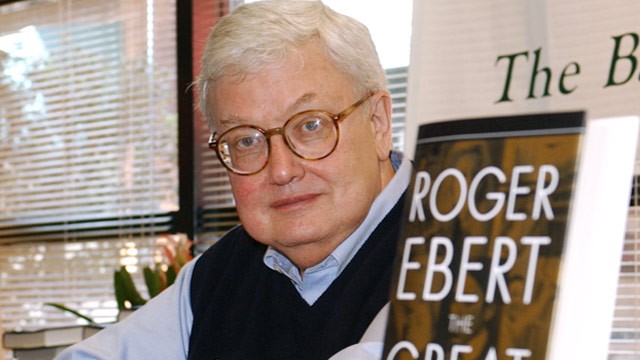
To commemorate the third anniversary of Roger Ebert’s death, we asked UCP film studies editor Rodney Powell to consider his legacy. Read after the jump below.
***
It’s three years since Roger Ebert’s death; for three years we’ve been deprived of his reviews, “Great Movies” essays, and journal entries. Fortunately most of his writing remains available online, and the University of Chicago Press has been privileged to publish three of his books—Awake in the Dark, Scorsese by Ebert, and The Great Movies III, with a fourth, a reprint of Two Weeks in the Midday Sun: A Cannes Notebook just out. And there’s more to come, with The Great Movies IV due this fall.
So I think this should be an occasion for celebrating rather than lamenting. My own hope is that, as the celebrity status he attained fades from memory, he will be recognized for the brilliant writer he was. Within the confines of the shorter forms in which he wrote, he was an absolute master. Of course not every piece was at the same high level, but a remarkable percentage of his vast output will, I think, stand the test of time. Here I will only mention the high regard in which his work is held by film scholar extraordinaire David Bordwell (see his Forewords to Awake and GM III) as additional proof of its value.
I provided my own brief appreciation of Ebert’s writing back in 2013, and I still agree with that appraisal, particularly this statement: “Like other lasting critics, he could make his readers understand the moral qualities of the works he valued most by revealing how they made audiences think about the Big Questions—not by preaching, but by engaging with the dramatic complexities at the core of those films.”
And I don’t think I can do any better than the final paragraph of that piece: “If writers give us the best of themselves in their writing, Ebert’s gifts to his readers were abundant—intelligence, wit, clarity, and generosity expressed in prose that is both engaging and thought-provoking. As long as the printed word survives, those gifts of his large spirit will be available. And death shall have no dominion.”
Amen.
To read more about books by Roger Ebert published by the University of Chicago Press, click here.
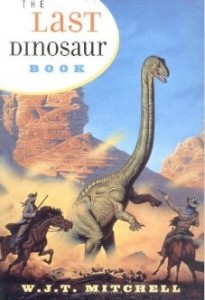
From WJT Mitchell’s review of Pixar’s The Good Dinosaur, live at the LA Review of Books:
The Pet Collector reminds us of the most fundamental role of language: the ability to name things, and by doing so, to make them belong to us, and we to them. (The naming of and “dominion over” animals are central to Adam’s role in the Garden of Eden.) But the Collector doesn’t just take possession of his adopted family of animals; in his excessive abundance of attachments, he is clearly also possessed, and appears to be a fearful hoarder of living things. Arlo, by contrast, only needs his one companion, Spot, and he is comfortable with letting Spot go when he finds a human family to join at the conclusion of the film.
All this reeks of what anthropologists used to call totemism, the adoption of natural things (animals and plants) as kinfolk and symbols of kinship in so-called primitive cultures. The problem is that dinosaurs were unknown to primitive cultures; they are a thoroughly modern discovery, never named, classified, or adopted until the British paleontologist Richard Owen proclaimed their existence in 1843. Could it be that modern cultures need totemism too? Freud’s Totem and Taboo argued that totemism was obsolete in the modern world, while taboos still abound. But he failed to consider the possibility of a distinctively modern totemism, in which the animal counterpart and companion to the human species is an extinct family of prehistoric animals discoverable only by modern science. Dinosaurs provide the perfect Darwinian allegory for the human race — namely, the possible (or should we say highly probable) prospect that human beings could wind up just like them — extinct. That, it seems to me, is the best explanation of the strange array of contradictory attitudes toward dinosaurs as popular icons. They are friends and companions, on the one hand, and feared enemies, on the other. They are ferocious wild animals and domestic pets, vicious predators and peaceful vegetarians. In short, they are a mirror of all the varieties of our own human species, distributed across a genus of extinct animals that exist only in the realms of unbridled imagination and biological science — a perfectly modern combination.
To read the review in full at LARB, click here.
For more information about Mitchell’s The Last Dinosaur, click here.

To catch the wave of year-end lists and Best of the Best citations, we thought to extend our reach beyond the books we publish here at the Press, and ask some of our scholarly tastemakers the works they’d endorse as most praiseworthy in 2012. Not every pick is new and you’ll see some selections here that may not flit across the landscape of other favorites lists—but we’ll be posting the books that made our radar blink all week long, with salutations to the authors, ideas, and publishers (large and small) that keep us coming back for more.
***
Today, we’re off and running with picks from Carol Fisher Saller, our assistant managing editor of manuscript editing at the Press, author of The Subversive Copy Editor: Advice from Chicago (Or, How to Negotiate Good Relationships with Your Writers, Your Colleagues, and Yourself), and editor of The Chicago Manual of Style Online’s Q & A + Rodney Powell, our assistant editor acquiring in film and cinema studies and all-around movie guru:
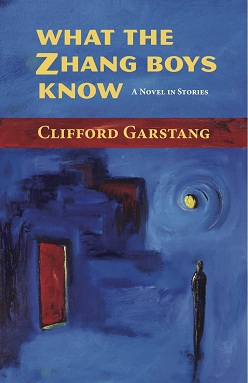 What the Zhang Boys Know, by Clifford Garstang (Press 53, 2012), is a tender look at the residents of the Nanking Mansions condos in the unevenly gentrifying Chinatown of Washington, DC. The boys are the small children of a recent widower, Zhang Feng-qi, and what they don’t know is equally to the point, as the novel’s interwoven short stories take us behind the condo doors of Feng-qi, a gay couple and their little dogs, a sculptor, a desperate and penniless young woman, and others, both to see what the other residents can’t and to view developments through yet another individual’s eyes. Garstang’s forte is the short story—most of these first appeared in literary journals—and this is his second novel in stories. His first, In an Uncharted Country (Press 53, 2009), is every bit as affecting. —Carol Fisher Saller
What the Zhang Boys Know, by Clifford Garstang (Press 53, 2012), is a tender look at the residents of the Nanking Mansions condos in the unevenly gentrifying Chinatown of Washington, DC. The boys are the small children of a recent widower, Zhang Feng-qi, and what they don’t know is equally to the point, as the novel’s interwoven short stories take us behind the condo doors of Feng-qi, a gay couple and their little dogs, a sculptor, a desperate and penniless young woman, and others, both to see what the other residents can’t and to view developments through yet another individual’s eyes. Garstang’s forte is the short story—most of these first appeared in literary journals—and this is his second novel in stories. His first, In an Uncharted Country (Press 53, 2009), is every bit as affecting. —Carol Fisher Saller
 I like to circle around subjects over an extended period of time, so it’s not surprising that my favorite book of 2012, Kazan on Directing, was first published in 2009 (the centenary of Kazan’s birth). It includes excerpts from his notebooks, personal journals, and correspondence, as well as other texts, both published and unpublished—a fascinating combination of detailed comments about individual projects and general ruminations about the art of directing for both stage and screen. Go to the chapter on Death of a Salesman (Kazan’s favorite among all the plays he directed) and be engrossed by his analysis of that great work, taken from a notebook entry and script notes. Then go on to a letter he wrote to the four principal actors several months into the run after he attended a performance and found them coasting. I think you’ll be hooked, and ready to investigate the fascinating relationship with Tennessee Williams on four plays and two films—and I haven’t even mentioned the memorable collaborations with Marlon Brando from A Streetcar Named Desire to On the Waterfront. Elia Kazan, whatever his failings, was a major American artist, and Kazan on Directing helps us understand why that is so. —Rodney Powell
I like to circle around subjects over an extended period of time, so it’s not surprising that my favorite book of 2012, Kazan on Directing, was first published in 2009 (the centenary of Kazan’s birth). It includes excerpts from his notebooks, personal journals, and correspondence, as well as other texts, both published and unpublished—a fascinating combination of detailed comments about individual projects and general ruminations about the art of directing for both stage and screen. Go to the chapter on Death of a Salesman (Kazan’s favorite among all the plays he directed) and be engrossed by his analysis of that great work, taken from a notebook entry and script notes. Then go on to a letter he wrote to the four principal actors several months into the run after he attended a performance and found them coasting. I think you’ll be hooked, and ready to investigate the fascinating relationship with Tennessee Williams on four plays and two films—and I haven’t even mentioned the memorable collaborations with Marlon Brando from A Streetcar Named Desire to On the Waterfront. Elia Kazan, whatever his failings, was a major American artist, and Kazan on Directing helps us understand why that is so. —Rodney Powell
Cheers to holiday reading—stay tuned for more!
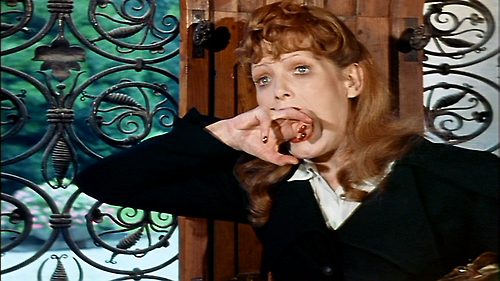
Rainer Werner Fassbinder (1945–82), hard-living, frenetic (libertine, bourgeois-scourging) New German filmmaker would have turned sixty-seven today, had he survived even into his forties. Strong-armed by the influence of Brechtian theater and Jean-Luc Godard’s Weekend (1967), Fassbinder went on to direct forty films and made-for-television performances—though like the Frenchman L. J. M. Daguerre and the American John Waters (puppet theater), Fassbinder’s background was the stage, and it showed. His early work is marked by a static camera and dialogue not conceivably of this world; he goes on the record in a piece later reprinted for Cineaste, where he states:
“I would like to build a house with my films. Some are the cellars, others the walls, still others the windows. But I hope in the end it will be a house.”
To watch a Fassbinder film is to participate, if only through mediation, in the tailwinds of the director’s cultural persona, his bad-boy whipping-up of a post-fascist, prejudicial German zeitgeist. To cogently locate him politically, and to infer his contributions to post-war, avant-garde cinema nearly three decades after his death, is a bit trickier.
Coincidentally, it was almost thirty-eight years ago to the day that Fassbinder’s Martha premiered on German television. Martha was the film Fassbinder completed immediately prior to Ali: Fear Eats the Soul (perhaps his most acclaimed production), though it was initially released in the aftermath of that film’s successes. Shot entirely on 16mm, and dealing with typical themes for the director (the fascist undertones of traditional family structures, physical and emotional paralysis, sadism, hysteria, dead cats, obsession, exceedingly banal-yet-mortified facial expressions), it was Martha‘s DVD-release in 2004 that first allowed the film to reach many American audiences.
Never one to shy away from controversy, longtime critic and blogger Jonathan Rosenbaum took on the film—and Fassbinder—in “Martha: Fassbinder’s Uneasy Testament,” featured in his 2010 collection Goodbye Cinema, Hello Cinephilia: Film Culture in Transition, which collects some of Rosenbaum’s most discriminating pieces from the past four decades, including several like this one, which focus on newly circulating releases and other developments of the digital age. An excerpt follows below.
__________________________________________________________________________________________
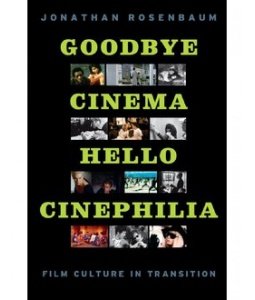 Part of my reluctance to join the Fassbinder bandwagon in the ’70s was that I couldn’t accept without qualms the critical industry’s interpretation of his work as left-wing and subversive—an interpretation that was intricately bound up with the rediscovery of Douglas Sirk’s ’50s Hollywood movies by Fassbind
Part of my reluctance to join the Fassbinder bandwagon in the ’70s was that I couldn’t accept without qualms the critical industry’s interpretation of his work as left-wing and subversive—an interpretation that was intricately bound up with the rediscovery of Douglas Sirk’s ’50s Hollywood movies by Fassbind
The auteur is dead, says Jean-Luc Godard. The future is cut-and-paste movie mashups.*
#DearNetflix:
Satyajit Ray.**
The Odyssey is a sequel to the Iliad, and the second, better part of Don Quixote is a sequel to the first.
You can argue that Andy Warhol revamped this idea.
Throughout the 1940s, Welles and Wyler wrote articles and gave more interviews, often insisting that their films invited greater participation on the part of spectators.
Andrew Sarris's You Ain't Heard Nothin' Yet and the collection OK, You Mugs.
For the sake of simplicity, we've called the principles norms.
Exhibit A is Tamar Lane's book The New Technique of Screen Writing (McGraw-Hill, 1936).
Jurassic Park and The Host likewise trace out several plot strands among a variety of characters.
I once asked Kiarostami how he got the remarkable performances in shot/reverse-shot that we see in films like Through the Olive Trees (1994) and The Taste of Cherry (1997). He said that he simply filmed one actor saying all of his lines and giving all his reactions, then filmed the other.
In order to pursue this question, the critic needn't declare Rebecca a great film or a failure.
If you declare that There Will Be Blood is a good film, you're evaluating it.
Progressive opinion in the silent era tended to deny that film was a performing art, since that would make it a form of theater. No, film had unique capabilities. Cinema was essentially moving pictures.
Thinking historically need not numb us to surprises.
*from a 12 June Guardian headline
**all text assembled from David Bordwell and Kristin Thompson's Minding Movies: Observations on the Art, Craft, and Business of Filmmaking























